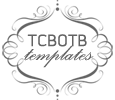One of the battles I constantly fight as a music teacher
is forgetfulness. When you see your kids only once or twice a week, it is a
battle that will never stop. I don’t want to waste time going over already
learned concepts every other second, so we regularly review the concepts
already covered.
Every day with intermediate grades, I have two or three review questions on the board so students have a task to focus on as soon as they are in the room. We go over them very quickly, and this does help them to remember concepts. Sometimes, however, students more than one or two questions to make sure they stay on top of previously taught concepts. This is even more true with grades that are about to take summative semester tests. Partner review cards are a great way to help review and keep students engaged.
Can I tell you how much I love the dollar store? I LOVE IT A LOT. There are so many good things you can use as manipulatives, and for a lot less than official manipulatives online or at teacher stores. This summer, I found these beauties at Dollar Tree and stocked up, knowing they would come in handy. They come in packs of 24, so I picked up several of each to be ready for the larger classes.
Every day with intermediate grades, I have two or three review questions on the board so students have a task to focus on as soon as they are in the room. We go over them very quickly, and this does help them to remember concepts. Sometimes, however, students more than one or two questions to make sure they stay on top of previously taught concepts. This is even more true with grades that are about to take summative semester tests. Partner review cards are a great way to help review and keep students engaged.
Can I tell you how much I love the dollar store? I LOVE IT A LOT. There are so many good things you can use as manipulatives, and for a lot less than official manipulatives online or at teacher stores. This summer, I found these beauties at Dollar Tree and stocked up, knowing they would come in handy. They come in packs of 24, so I picked up several of each to be ready for the larger classes.
The game is simple. Students have a card that is either a concept or a definition/example. Students get a card and silently move (I use a musical timer) to find the person who has the accompanying card. For first and second graders, I let them whisper to help students who may not be to the point of silently reading yet. Once students find their partner, they talk for a few moments to make sure they can justify why they think the two cards go together. We check a few groups as a class, and then the students have 10 seconds to trade cards with someone who was not their partner. This sets us up for another round.
Here is a second grade example.
I like this game because it gets kids up and moving, gives them a chance to talk with several partners, and really reinforces previously learned knowledge. I focus on getting students to justify why they chose the answer, really making them think about their reasoning. My school is also focusing on accountable talk, and this activity is a good opportunity for students to practice those skills. This is a great review for any definition-heavy subject as well. I've found this game much more effective than more traditional reviews with paper and pencil.
Have fun with this game, I hope your kiddos love it as much as mine do!











